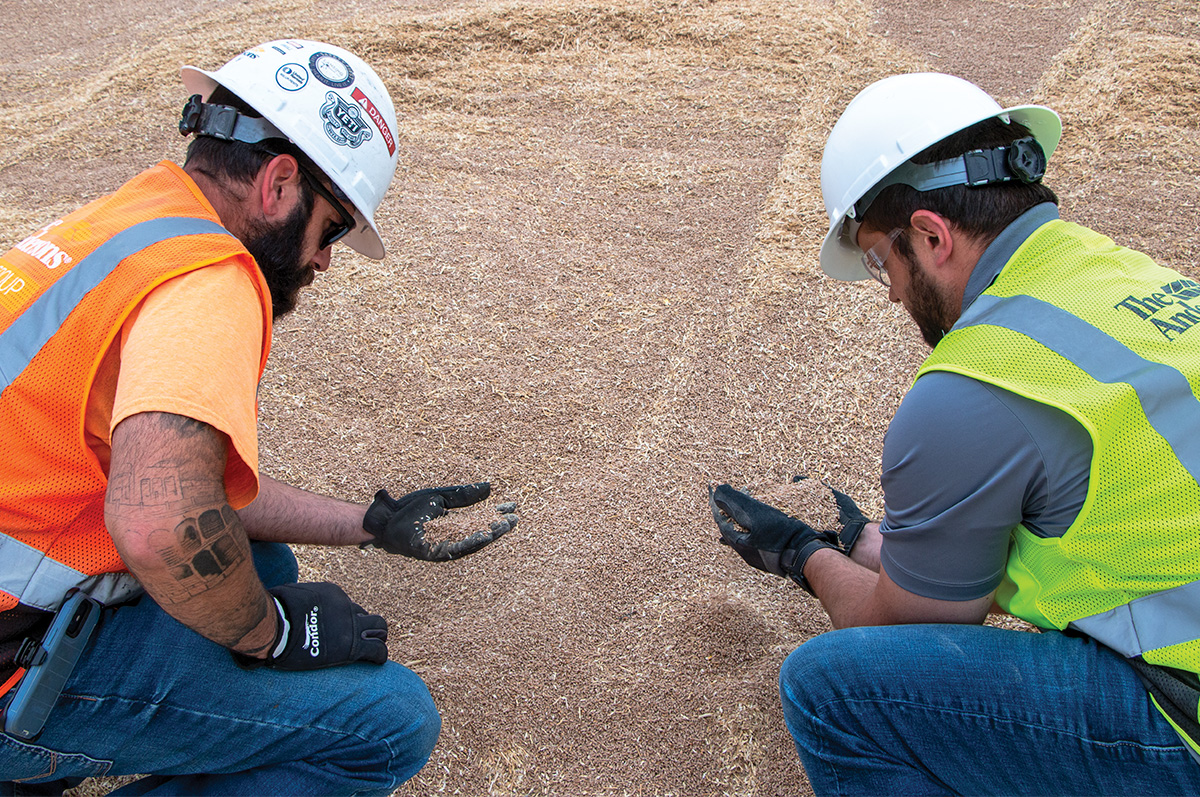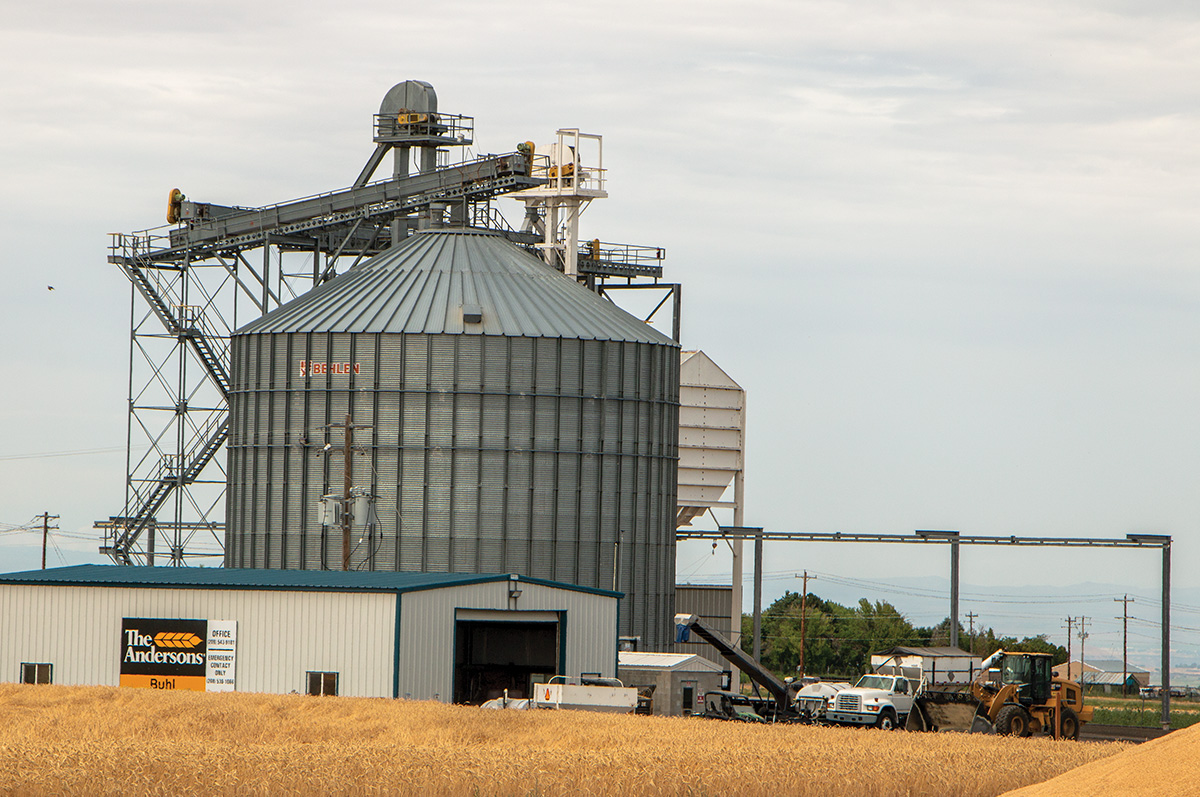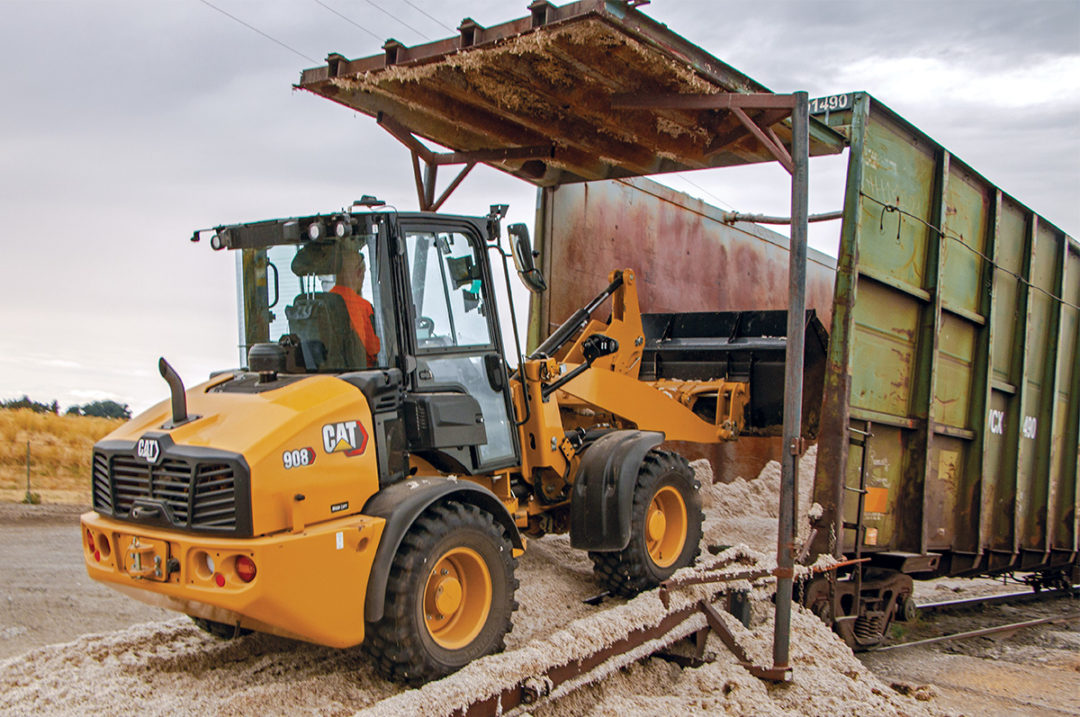What you notice first on the north side of Interstate 84 running through Bliss are grain bins with “The Andersons” logo displayed. And you see large golden, pyramid-shaped piles of wheat fronted by 110-car rail units. It’s an impressive site, but there’s a lot more you don’t see.
What you don’t readily see is a corn grinder or the warehouse that stores cottonseed, dried distillers grains and soybean meal brought in for dairy customers. Behind the scenes, there are also the people who make it all work, to include the Bliss employees who partner with over 1,000 local farms as well as the employees from all 13 of The Andersons facilities across Idaho, serving domestic and global markets.
Right now, labor shortages are having a great impact and placing quite a burden on employees. “Our employees have really stepped up and have truly sacrificed their time, putting in heavy hours and doing hard work, to make sure that our customers are served,” says Austin Hanny, profit center manager over the Idaho facilities.
 Kevin Cardoso (left) and Austin Hanny (right) are part of The Andersons Inc. team, helping farms manage the logistics of getting the right grain to the right location. Photo by Lynn Jaynes.
Kevin Cardoso (left) and Austin Hanny (right) are part of The Andersons Inc. team, helping farms manage the logistics of getting the right grain to the right location. Photo by Lynn Jaynes.
Another challenge is the unreliability of the rail system, when cars show up days or even several weeks after they were scheduled, requiring after-hours unloading or loading. Supply chain disruptions and delayed rail transportation ranks high on the list of difficulties of many ag businesses. The railroad and trucking logistical challenges have made transportation difficult for everyone in recent years.
Hanny says, “This year we were forecasted to complete shipping of last year’s crop in May, but it is now August and our elevators are still full of 2021 production, which makes it challenging to receive this year’s grain.”
“We sell wheat to the Pacific Northwest,” Hanny says. “Typically, we ship to Washington, where it would then get loaded onto a boat for Asia. But due to rail shipping being several months behind on car placements, we can’t load cars to execute these sales today. Rail shipping issues anywhere greatly impact Idaho’s access to grain markets and, by extension, the whole Idaho ag economy.”
He adds, “The ongoing labor disputes from the railroad labor unions have made it difficult for the whole shipping industry.” As laborers threatened to strike over salary, benefits and other work practices, administration officials met to achieve a tentative truce in late September. The averted strike would have included five U.S. “Class 1” freight railroads (BNSF, CSX, Kansas City Southern, Norfolk Southern and Union Pacific). But the ongoing rail struggles have had a detrimental impact on the grain industry.
“When rail cars are late, there’s no recourse for The Andersons – we end up absorbing the damages or extra costs for late product, etc. For instance, there have been corn shortages throughout Idaho this year due to rail non-performance. Literally, cars have been loaded in the Midwest ready to ship to Idaho and have sat for three weeks before their voyage begins. There’s not that large a margin for error that can be absorbed without impact,” Hanny says.
 The pyramid-shaped grain piles stored in the open air are treated and monitored to prevent insect invasion. Photo by Lynn Jaynes.
The pyramid-shaped grain piles stored in the open air are treated and monitored to prevent insect invasion. Photo by Lynn Jaynes.
“It’s a tough situation,” says Kevin Cardoso, Bliss facility operations supervisor. “When they say we have rail cars coming, we stop what we’re doing, change out the setup and get ready to load, but then usually find out the cars aren’t here when they said they would be. We then have to reset and reshuffle the workload again. It’s hard on employees. Filling or emptying rail cars at varying times and at odd hours takes a toll on the labor force who have community or school events and family commitments to juggle, too. Plus, changing the workflow all the time isn’t very efficient.”
Hanny agrees, “These workers who show up every day at our facilities are our backbone. They seldom get the thanks and attention they deserve. We couldn’t do this without them. I can’t say enough good about the workers who show up, who stay until 9 p.m. or midnight whenever the rail cars actually arrive, who stick out the long hours during harvest – we would be nothing without them.”
“And you know,” he continues, “the first person and the last person our customers see on the way in here is the person at the scale and the person dumping their truck or loading their truck. These people are exceptional and need to be commended because it's not as popular to work in agriculture anymore.”
Hanny, from a fourth-generation farm himself, says many of The Andersons employees are connected to agriculture in a personal way – as former dairymen, former farmers, former truckers. “They absolutely understand our customers and interact with them every day, not just in their business dealings but also in their communities. If you go to church, you’ll see your customers. If you go to the rodeo, you’ll see your customers. If you go to the grocery store, you’ll see your customers. It’s really important to get the right people working with us, and we have some of the best employees of any business in Idaho.”
The Andersons will handle 40 to 50 million bushels of grain per year statewide. This doesn’t include dried distillers grains (DDG), soybean meal handling, cottonseed handling and other feed ingredients. Of the 22 million bushels that go through the Bliss facility, 10 to 12 million bushels will be grain corn.
 One of the 13 facilities of The Andersons in Idaho is in Buhl, which handles a lot of triticale seed processing. Photo by Lynn Jaynes.
One of the 13 facilities of The Andersons in Idaho is in Buhl, which handles a lot of triticale seed processing. Photo by Lynn Jaynes.
The pyramid-shaped piles outside the Bliss facility are roughly four stories high, each holding 1.5 million bushels. “Grain is stored in open piles like this all across the world,” Hanny says. “You’d be amazed how much water these piles shed because of the shape. We also use fans to help aerate the piles through a pipe system. Water is always a concern, but there is a tolerance that we can manage – and we tarp the piles when needed.”
But there’s more to think about than just moisture. “Some of the challenges we’ve had this year have been created by wind and blowing dust, too,” Cardoso says. “It’s a bigger problem than you might realize for us.”
The Andersons provides value to the marketplace through logistic services of grain, so that the right product gets to the right buyer at the right time. The company also offers storage for producers who want to just store their grain and then sell it at a later date. Hanny shares, “There’s no farm too small and no farm too big for us. We take a lot of pride in servicing the needs of every farm. They’re our priority, no doubt.”
“We’re not just a grain-handling business. We’re a service business. The service we provide is grain handling, but our mindset is that we are a service industry,” Hanny says.



.jpg?t=1687979285&width=640)

.jpg?height=auto&t=1713304395&width=285)


